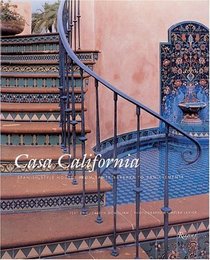Search -
Casa California : Spanish-Style Houses from Santa Barbara to San Clemente
Casa California SpanishStyle Houses from Santa Barbara to San Clemente
Author:
The Spanish-style architecture of Southern California's seaside estates, canyon villas, and courtyard bungalows is central to its romantic image, one that has traditionally evoked a Mediterranean paradise. The details of this inexhaustively rich style-- ornate wrought iron and wood balconies, colorful tiles, graceful arches, and palm-dotted gard... more »
Author:
The Spanish-style architecture of Southern California's seaside estates, canyon villas, and courtyard bungalows is central to its romantic image, one that has traditionally evoked a Mediterranean paradise. The details of this inexhaustively rich style-- ornate wrought iron and wood balconies, colorful tiles, graceful arches, and palm-dotted gard... more »
ISBN-13: 9780847818501
ISBN-10: 0847818500
Publication Date: 5/15/1996
Pages: 208
Rating: ?
ISBN-10: 0847818500
Publication Date: 5/15/1996
Pages: 208
Rating: ?
0 stars, based on 0 rating
Genres:
- Crafts, Hobbies & Home >> How-to & Home Improvements >> Home Decorating & Design >> Design & Construction
- Crafts, Hobbies & Home >> How-to & Home Improvements >> Home Decorating & Design >> General
- Crafts, Hobbies & Home >> Home Improvement & Design >> Decorating & Design >> General
- Engineering & Transportation >> Architecture >> General
- Engineering & Transportation >> Architecture >> Regional >> United States (Southern)
- Engineering & Transportation >> Architecture >> Buildings >> Residential
- General




